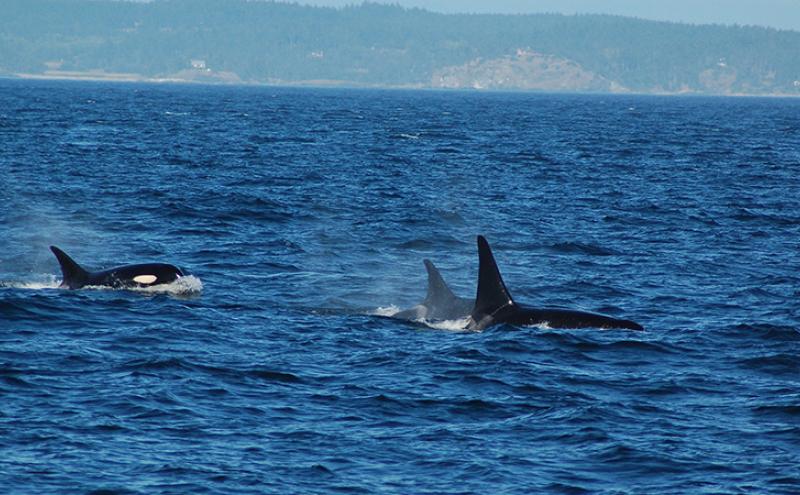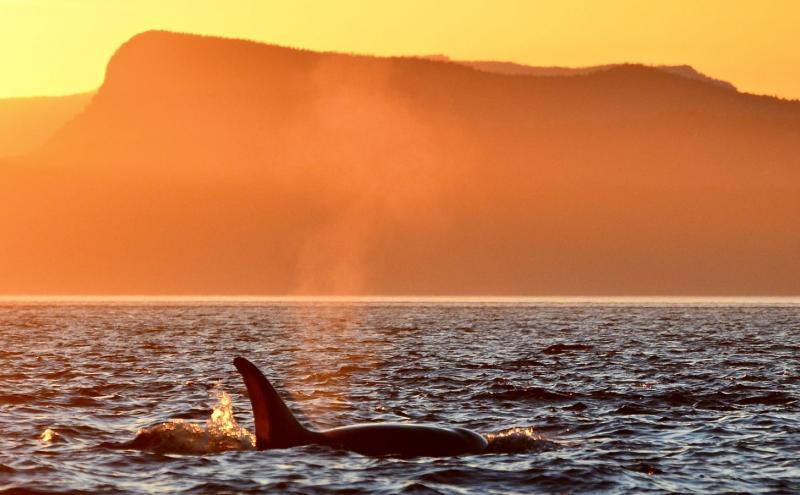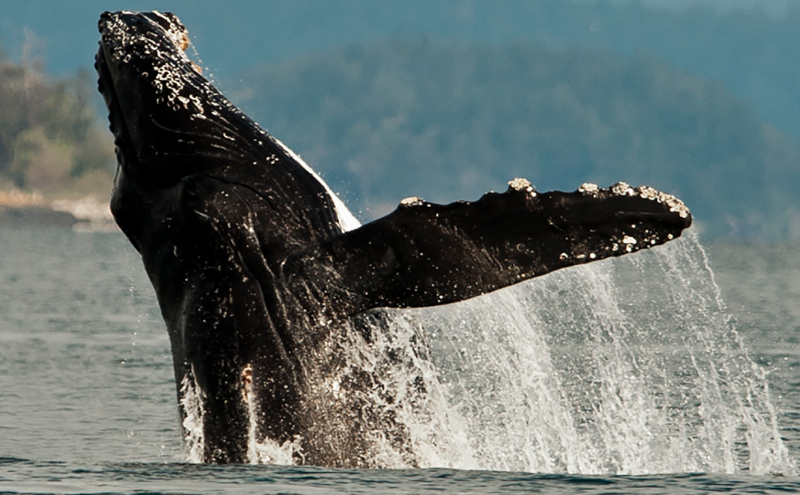
By Jon Sloan, Senior Manager, Environmental Programs, Port of Seattle
June is Orca Action Month, which is an opportunity to honor and inspire action on behalf of our region’s critically endangered Southern Resident killer whale population, and restore the fragile habitat that orcas and humans call home.
Learn more about the plight of our region’s most iconic mammal, a species ecologically and economically important to our region, and actions we all can take to restore their habitat and their future.
1. Southern Resident orcas live in a matriarchal society
Southern Resident orcas are social creatures who cohabitate with their extended family, called a pod. A pod is led by an older matriarch and usually includes her male and female children, grandchildren, nieces, and nephews. Pods live and travel together and communicate using unique dialects (clicking, whistles, calls) that can be easily identified.
Some pods have as many as four generations traveling together. The Southern Resident orca community has three pods: J, K, and L, made up of 76 members total.
Orcas live with their mother for their entire lives, and the whole pod helps to raise and care for young members. Elder females serve as pod leaders, and pass on vital information to their daughters like when and where to look for salmon, safe places to rest and give birth, and passages to travel. Adult daughters who have their own children may spend some time away from the matriarch but are often found travelling nearby.
2. Orcas have a regional accent
Killer whales locate prey and navigate using their own sophisticated sonar, called echolocation. With echolocation, orcas use sound waves to track their next meal, creating sounds, or a series of clicks, that travel through the water. The sound waves echo off objects, like fish, and bounce back to the whale with information. Through echolocation, killer whales can detect fish up to 500 feet away. They can determine the size, species, speed, and direction the fish is swimming.
Orcas also use clicks, whistles, and pulsed calls to communicate with one another. All Southern Resident pods share around 30 common calls; within each pod the whales use variations of specific calls that are similar to a regional accent in humans.
3. Underwater noise has an impact on orca survival
Underwater noise is a threat to Puget Sound’s endangered Southern Resident orcas. Noise can impact orcas’ ability to hunt, communicate, navigate, and avoid danger, and can come from a variety of sources, including (but not limited to) small and large recreational boats and all sizes of commercial vessels.
The Port of Seattle has partnered with the Port of Tacoma, the Northwest Seaport Alliance (NWSA), and other agencies, tribes, and organizations to develop a program to reduce impacts to orcas from large commercial vessels. The Quiet Sound Program is a collaborative initiative that aims to reduce the impacts of underwater noise on Southern Residents. One of its most important first steps is to improve the reporting of whale sightings and get that information to the pilots of large vessels, so they can take action to slow down or move away from orcas. This contributes to their recovery by reducing stress levels and helping them function and find food. The Port and the Northwest Seaport Alliance created a challenge match of $100,000 to jumpstart the program, and the state legislature just included $500,000 for the biennium for Maritime Blue to get the program going.
4. Orcas are made for speed and distance
Did you know that orcas can swim as fast as 35 miles per hour and can travel up to 60 miles a day? Southern Resident orcas can be spotted in Puget Sound and in the Salish Sea waters of British Columbia from late spring through the fall. As the Chinook salmon population decreases in the Salish Sea during the winter, resident killer whales disperse and hunt for salmon in the North Pacific. Some Southern Resident pods have migrated as far south as Monterey, California and as far north as Southeast Alaska.
5. Orca survival depends upon salmon recovery
The survival of orcas is tied to the fat of salmon. In 2005, the Southern Resident orcas were designated as endangered under the federal Endangered Species Act and, according to the National Marine Fisheries Service, remain one of the most critically endangered marine mammals in the United States. They reached a peak size of 98 orcas in 1995, and as of February 2021, consist of just 75 orcas. Even with the birth of two calves, this group's numbers remain dangerously low.
One of the main threats to orcas’ survival is lack of food. Chinook salmon makes up 80 percent of their diet; Puget Sound salmon populations are also in decline, adding urgency to salmon recovery efforts in Washington.
- Did you know? An orca eats around three to four percent of its body weight in food every day and a full-grown adult male can weigh eight tons! An adult orca eats up to 300 pounds of fish per day.
Recognizing the connection of salmon recovery to orca conservation, the Port of Seattle has taken measures to improve salmon habitat at our marine parks and transportation facilities. In fact, SEA Airport is the first major transportation facility in the U.S. to be certified Salmon-Safe, and the Port maintains all parks organically to comply with the fish-friendly guidelines.
In addition to the programs above, here's how the Port is helping to protect orcas:
- Holding an underwater noise conference co-convened with Port of Tacoma, NWSA, Washington State Ferries, NOAA, and the Puget Sound Partnership. The conference brought together a broad range of experts and interests to identify ways to reduce underwater noise in an effort to support a recovery of the endangered population of Southern Resident killer whales. Learn more
- Working with industry and government partners to provide data to commercial mariners regarding whale sightings so they can take appropriate action, such as slowing down their vessels while in the vicinity of whales.
- Developing clear signage at the Port’s six marinas to educate boaters about how to protect the orcas.
Top photo credit: "Southern resident orcas-J pod" by Loutron Glouton is licensed under Creative Commons BY 2.0.









